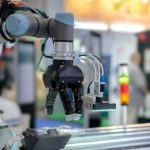NASA has announced the selection of 12 scientists to join the European Space Agency’s (ESA) Hera mission, set to launch in October 2024. The primary focus of Hera is on studying the binary asteroid system Didymos and its moonlet Dimorphos, which was previously impacted by NASA’s DART (Double Asteroid Redirection Test) spacecraft. The Hera mission aims to further validate the kinetic impact method for asteroid deflection, a critical technology for planetary defense. More details can be explored in the official NASA announcement.
Studying the Impact
Scheduled to arrive at the Didymos/Dimorphos system by the end of 2026, Hera will collect extensive data regarding the mass and composition of both celestial bodies. It will also measure the changes induced by DART’s impact. This mission aims to enhance our understanding of near-Earth asteroids and validate the effectiveness of kinetic impact as a viable planetary defense strategy.
U.S. Scientists Involvement
The Hera Participating Scientist Program is designed to support U.S.-based scientists, allowing them to actively contribute to the mission. These scientists will join the Hera science team, working over a five-year period to address crucial planetary defense and asteroid science questions. The selected scientists come from prestigious institutions such as NASA’s Jet Propulsion Laboratory and Johns Hopkins Applied Physics Laboratory.
History of Collaboration
DART, the first planetary defense mission organized by NASA’s Planetary Defense Coordination Office, serves as a precursor to Hera. International collaboration in planetary defense has been crucial, with the Asteroid Impact and Deflection Assessment facilitating joint efforts between DART and Hera. The DART mission, managed by Johns Hopkins Applied Physics Laboratory, was a significant step in testing asteroid deflection strategies.
Additional insights into the Hera mission reveal its comprehensive approach to understanding the aftermath of an asteroid impact. Past articles have highlighted Hera’s use of CubeSats to gather detailed information about Dimorphos. Comparing these insights with the current mission details, it becomes evident that NASA and ESA aim for a multifaceted analysis of the kinetic impact method.
Further investigation into the mission’s goals shows an emphasis on international cooperation. Previous reports have underscored the importance of global scientific collaboration in planetary defense, aligning with the current mission structure that incorporates the expertise of scientists from multiple institutions.
The Hera mission, supported by the expertise of the newly selected scientists, represents a significant step in planetary defense research. By studying the Didymos/Dimorphos system, Hera aims to provide critical data on asteroid composition and the efficacy of deflection techniques. This mission underscores the importance of international collaboration in addressing global challenges.
The mission’s focus on kinetic impact as a deflection method is particularly noteworthy. Understanding the changes induced by DART’s impact will inform future planetary defense strategies, potentially safeguarding Earth from asteroid threats. The involvement of scientists from leading institutions further strengthens the mission’s scientific foundation.
In conclusion, the Hera mission stands as a pivotal endeavor in planetary defense. By leveraging the expertise of selected scientists and building on the groundwork laid by DART, Hera aims to advance our understanding of asteroid deflection. This mission highlights the critical role of international cooperation in addressing the challenges posed by near-Earth asteroids, contributing to global safety and scientific progress.
- NASA selects 12 scientists for ESA’s Hera mission.
- Hera to study the Didymos/Dimorphos asteroid system.
- Mission aims to validate kinetic impact for asteroid deflection.










